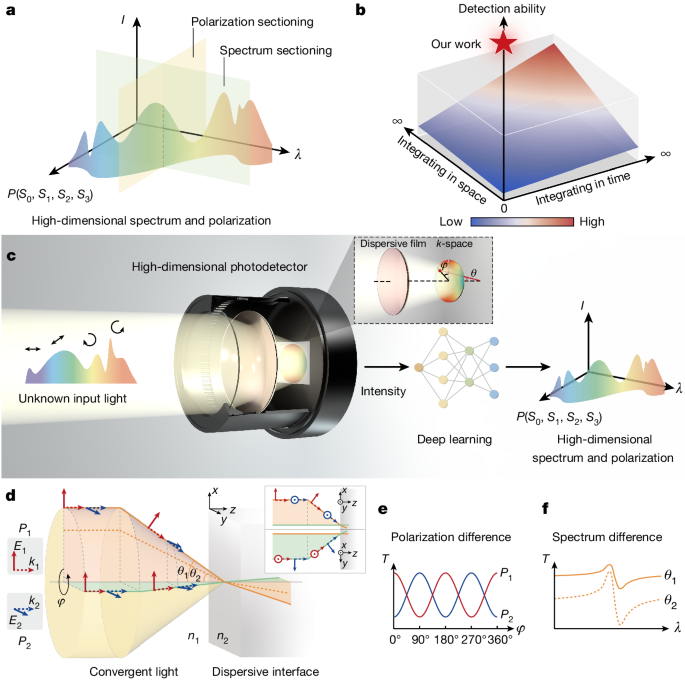Thin-Film Dispersion-Based Device for Simultaneous Measurement of Light Intensity, Polarization, and Spectrum
The article presents a novel approach for simultaneously characterizing the intensity, polarization, and spectrum of light using a simple thin-film interface. Conventional methods for polarimetry and spectrometry typically require complex integration of multiple polarization- and wavelength-sensitive elements, which can be bulky and alignment-sensitive.
The key innovation is the use of spatial and frequency dispersion in a thin-film structure to project the polarization and spectral information of the incident light into the wavevector domain. This allows the high-dimensional light information to be encoded into a single-shot image, which can then be deciphered using a deep residual neural network.
The authors demonstrate that their approach can fully characterize the arbitrary full-Stokes polarization states across a broadband spectrum with a single device and a single measurement. The performance is comparable or better than state-of-the-art single-purpose polarimeters and spectrometers, while offering a much more compact and alignment-free solution.
This work presents a significant advancement in high-dimensional photodetection and imaging, with potential applications in various fields, such as remote sensing, biomedical imaging, and optical communications.
ปรับแต่งบทสรุป
เขียนใหม่ด้วย AI
สร้างการอ้างอิง
แปลแหล่งที่มา
เป็นภาษาอื่น
สร้าง MindMap
จากเนื้อหาต้นฉบับ
ไปยังแหล่งที่มา
www.nature.com
Dispersion-assisted high-dimensional photodetector - Nature
ข้อมูลเชิงลึกที่สำคัญจาก
by Yandong Fan,... ที่ www.nature.com 05-15-2024
https://www.nature.com/articles/s41586-024-07398-w
สอบถามเพิ่มเติม
